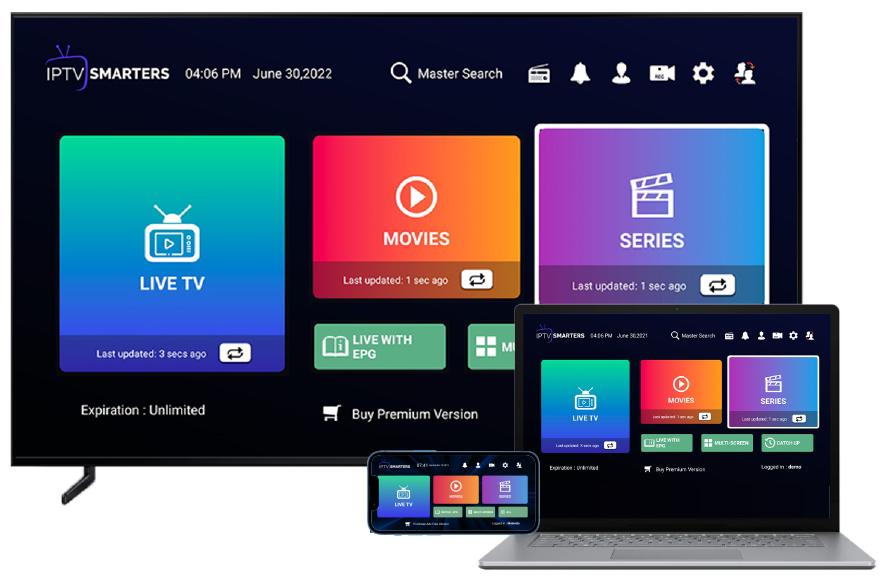Enhance Your Watching Experience: IPTV Subscription with Comprehensive Networks
Enhance Your Watching Experience: IPTV Subscription with Comprehensive Networks
Blog Article
Exactly How IPTV Functions: A Step-by-Step Overview to Web Method Television Innovation
Internet Protocol Tv (IPTV) has changed the way we eat television content, offering a brand-new world of opportunities with the power of the internet. Comprehending the details of exactly how IPTV works can shed light on the technology that drives this ingenious kind of media shipment. From the fundamental concepts of IPTV to the intricate process of material delivery, each step plays a vital function in making certain a smooth watching experience. In this overview, we will discover the hidden systems that make IPTV a remarkable combination of innovation and amusement.
IPTV Essentials
In understanding IPTV basics, it is crucial to grasp the fundamental operations of this modern technology in supplying television material over the net. IPTV, which stands for Net Method Television, makes use of Net Protocol (IP) networks to transmit television web content to individuals' tools. Unlike traditional approaches of relaying tv material with cable or satellite signals, IPTV streams media via high-speed web connections.

Furthermore, IPTV permits interactive capabilities, such as video as needed (VOD) and digital program guides (EPG), enhancing the customer experience by offering more control and flexibility in accessing material. Overall, recognizing the basics of IPTV establishes the foundation for discovering its advanced capabilities and the benefits it provides to modern-day television usage.
Web Content Delivery Refine
Effective content shipment in IPTV systems entails a well-structured process that makes certain smooth transmission of tv material over IP networks. The web content delivery process in IPTV starts with the production of the video content, which is then inscribed right into digital style ideal for IP transmission. This encoded material is then firmly kept on web servers called media servers. When a viewer requests certain content, the IPTV system recovers the asked for data from the media web servers and delivers it to the audience's gadget over the web.

Middleware Performance
With the integration of middleware, IPTV systems gain boosted capability that streamlines individual communication and content administration. Middleware works as a vital component that connects the gap between the interface and the back-end facilities, facilitating smooth communication and interaction within the IPTV system. Among the vital features of middleware in IPTV is to allow customized user experiences by giving attributes such as interactive program overviews, video-on-demand services, interactive advertising, and user choices management. By systematizing these performances through middleware, provider can provide a much more dynamic and customized IPTV experience to their customers.

Device Compatibility
Offered the crucial role of middleware in making it possible for seamless interaction and content management in IPTV systems, a crucial element to take into consideration is the compatibility of devices used for accessing the IPTV solutions. Tool compatibility is necessary for making sure a smooth user experience and optimum efficiency when accessing IPTV content.
In the context of IPTV, investigate this site tool compatibility describes the capability of a device to successfully connect with the IPTV solution, show content properly, and sustain the necessary methods and codecs for streaming video content over the net. Different devices, such as clever Televisions, set-top boxes, mobile phones, tablet computers, and computers, might have varying degrees of compatibility with IPTV services.
To guarantee a seamless watching experience, it is very important for individuals to select devices that are suitable with the specific IPTV solution they are using. Furthermore, IPTV company need to offer assistance for a wide variety of gadgets to deal with the varied demands of their individual base. By focusing on device compatibility, both customers and service carriers can boost the total IPTV experience.
High Quality of Service (QoS)
Considering the critical role of keeping a high criterion of efficiency and dependability in IPTV systems, guaranteeing consistent Quality of Service (QoS) stays a basic aspect of the user experience. QoS in IPTV describes the ability of the system to provide web content with marginal disruptions, high resolution, and quickly filling times. To achieve optimum QoS, numerous elements require to be dealt with. Network data transfer is important to support top notch video streaming without buffering or pixelation. Furthermore, latency, jitter, and packet loss must be lessened to improve the watching experience.
Provider utilize QoS systems such as traffic prioritization, buffering, and mistake modification to preserve a steady IPTV solution. By focusing on IPTV website traffic over less time-sensitive information, service providers can guarantee smooth playback also during top usage hours. Buffering assists compensate for network variations, while error modification strategies improve data integrity.
Continuous surveillance and optimization of QoS criteria are important to adjust to altering network conditions and customer needs. Eventually, a robust QoS framework is vital for providing a smooth and delightful IPTV experience to users.
Final Thought
In final thought, IPTV operates through this website the transmission of tv material over net method networks. Quality of Service plays a crucial function click this in maintaining the effectiveness and reliability of IPTV services - IPTV subscription.
Report this page